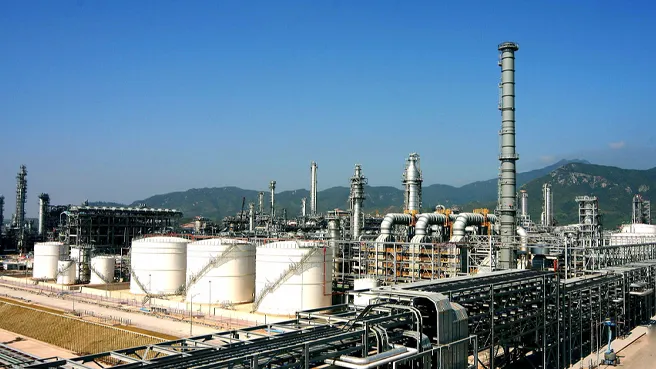
sbr chemical
SBR Chemical An Overview of Its Importance and Applications
SBR chemical, short for Styrene-Butadiene Rubber, is a synthetic rubber that has become integral in various industries due to its unique properties and versatility. It is primarily manufactured through the copolymerization of styrene and butadiene, resulting in a material that exhibits a combination of elasticity, strength, and resistance to wear. These characteristics make SBR a sought-after material in multiple applications, particularly in the automotive and tire industries.
Key Properties of SBR
The properties of SBR make it an ideal choice for various applications. The copolymerization process leads to a material that has excellent abrasion resistance, dynamic mechanical properties, and tensile strength. SBR is also resistant to ozone and aging, which enhances its durability in outdoor environments. Additionally, it has good thermal stability, making it suitable for use in products exposed to fluctuating temperatures.
One of the standout features of SBR is its elasticity. It can return to its original form after being stretched, which is a critical requirement in applications such as tire manufacturing and other automotive products. The ability to withstand mechanical stresses while maintaining shape and functionality is what sets SBR apart from other materials.
Applications of SBR
The predominant application of SBR is in the production of tires. A vast majority of passenger car tires are made using SBR due to its excellent grip and wear resistance, which are crucial for vehicle safety and performance. The tire industry values SBR because it provides a balance of performance and cost-effectiveness. In addition to tires, SBR is used in various automotive components like seals, gaskets, and belts, where its durability and flexibility are essential.
Apart from the automotive sector, SBR is widely used in the production of footwear, adhesives, and sealants. The rubber's elasticity and comfort make it a popular choice in the manufacturing of shoe soles, while its adhesive properties are harnessed in a variety of applications, including construction and packaging. In the flooring industry, SBR is used as an underlayment material for carpets, providing cushioning and sound insulation.
sbr chemical

The use of SBR extends to the latex industry as well. SBR latex is utilized in coatings, paints, and textiles to provide a flexible and water-resistant finish. The ability to form stable emulsions with water makes SBR ideal for creating products that require a balance of flexibility and gelling capacity.
Environmental Considerations and Innovations
As with any synthetic material, the production and disposal of SBR raise environmental concerns. The raw materials used in the synthesis of SBR, as well as the manufacturing processes, can lead to emissions and waste. However, innovations in recycling technologies are paving the way for more sustainable practices within the industry. Companies are increasingly focusing on recycling old tires and other SBR products to create new rubber goods, thus minimizing waste and environmental impact.
Moreover, advancements in bio-based alternatives to traditional SBR are being researched and developed, which could provide more sustainable options in the future. These bio-based materials aim to reduce reliance on fossil fuels and lower carbon footprints associated with the production of synthetic rubber.
Conclusion
SBR chemical has revolutionized numerous industries with its unique properties and wide range of applications. From tires to footwear and beyond, the versatility of SBR makes it an invaluable material in modern manufacturing processes. As environmental considerations continue to shape the future of chemical production, the innovation within the SBR industry reflects a commitment to sustainability while maintaining the performance that has made it an industry favorite.
In conclusion, Styrene-Butadiene Rubber exemplifies the intersection of utility and capability in the realm of synthetic materials. As the world continues to evolve, so too will the applications and production methods of SBR, ensuring its place in both traditional and emerging markets for years to come.
-
Buy High-Quality Trichloroisocyanuric Acid for Sale | TCCA 90% SupplierNewsAug.30,2025
-
Pure Sodium Dichloroisocyanurate Dihydrate | Powerful DisinfectantNewsAug.29,2025
-
Industrial Chemicals: Quality & Purity for Every IndustryNewsAug.28,2025
-
Nitrile Rubber Honoring Strict Production StandardsNewsAug.22,2025
-
Aspartame Ingredients Honoring Food Safety ValuesNewsAug.22,2025
-
Fertilizer for Balanced Plant NutritionNewsAug.22,2025
-
Cyanide Gold Processing with High Purity AdditivesNewsAug.22,2025
Hebei Tenger Chemical Technology Co., Ltd. focuses on the chemical industry and is committed to the export service of chemical raw materials.
-

view more DiethanolisopropanolamineIn the ever-growing field of chemical solutions, diethanolisopropanolamine (DEIPA) stands out as a versatile and important compound. Due to its unique chemical structure and properties, DEIPA is of interest to various industries including construction, personal care, and agriculture. -

view more TriisopropanolamineTriisopropanolamine (TIPA) alkanol amine substance, is a kind of alcohol amine compound with amino and alcohol hydroxyl, and because of its molecules contains both amino and hydroxyl. -

view more Tetramethyl Thiuram DisulfideTetramethyl thiuram disulfide, also known as TMTD, is a white to light-yellow powder with a distinct sulfur-like odor. It is soluble in organic solvents such as benzene, acetone, and ethyl acetate, making it highly versatile for use in different formulations. TMTD is known for its excellent vulcanization acceleration properties, which makes it a key ingredient in the production of rubber products. Additionally, it acts as an effective fungicide and bactericide, making it valuable in agricultural applications. Its high purity and stability ensure consistent performance, making it a preferred choice for manufacturers across various industries.





